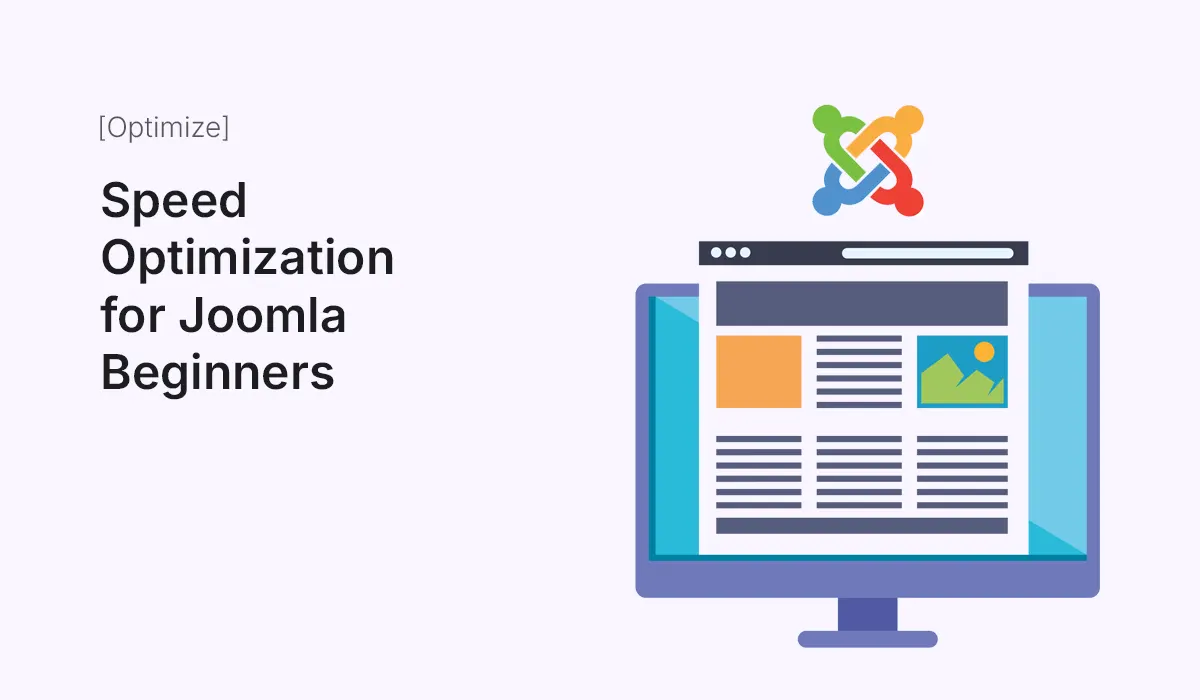Website speed is a critical factor for user experience, search engine rankings, and overall website success. Slow-loading websites frustrate visitors and can significantly reduce conversions. Joomla, while a powerful CMS, can become slow if not optimized properly. This guide will walk beginners through essential steps to speed up a Joomla website, from configuration tweaks to extensions and best practices.
Why Website Speed Matters
Optimizing your Joomla website’s speed is crucial because:
- Improved User Experience: Faster sites keep visitors engaged.
- Better SEO Rankings: Google and other search engines prioritize fast-loading websites.
- Higher Conversion Rates: Users are more likely to interact, subscribe, or purchase.
- Lower Bounce Rates: Slow websites lead to users leaving before exploring content.
For beginners, simple optimizations can drastically improve Joomla performance without technical complexity.
Step 1: Choose a Fast Hosting Provider
Your hosting environment impacts website speed:
- Shared Hosting: Suitable for small websites but may be slow during traffic spikes.
- VPS Hosting: Offers better speed and resources for medium-sized websites.
- Managed Joomla Hosting: Optimized specifically for Joomla, providing caching and performance enhancements.
A reliable hosting provider with good server response times lays the foundation for a fast website.
Step 2: Use a Lightweight Template
Templates affect page load times:
- Avoid overly complex templates with excessive animations or heavy modules.
- Use responsive, minimal templates like Helix Ultimate, JD Boston, or Astra for Joomla.
- Ensure the template is updated and compatible with Joomla 4.x.
A lightweight template ensures your website loads quickly across devices.
Step 3: Enable Joomla Caching
Caching reduces server load and speeds up page delivery:
- Go to System → Global Configuration → System → Cache Settings.
- Enable Conservative or Progressive Caching.
- Save settings and test your website speed.
Caching stores frequently accessed data, reducing page load time for repeat visitors.
Step 4: Optimize Images
Large images slow down websites significantly:
- Compress images using tools like TinyPNG or ShortPixel before uploading.
- Use appropriate formats: JPEG for photos, PNG for graphics with transparency, and WebP for faster loading.
- Add proper alt attributes for SEO and accessibility.
Optimized images improve load times without sacrificing quality.
Step 5: Minify CSS and JavaScript
Reducing file sizes helps browsers load content faster:
- Use Joomla template settings or extensions to minify CSS, JS, and HTML.
- Combine multiple CSS or JS files to reduce HTTP requests.
- Avoid inline scripts that block rendering.
Minification decreases file sizes and improves site speed.
Step 6: Use a Content Delivery Network (CDN)
A CDN delivers your website content from servers closer to the user:
- Popular CDNs: Cloudflare, StackPath, and BunnyCDN.
- Reduces latency for global visitors.
- Offloads bandwidth from your hosting server, improving performance.
CDNs are particularly useful if you have a global audience.
Step 7: Optimize Joomla Database
A clean database improves server response:
- Go to System → Global Configuration → Server → Database and check for optimization options.
- Use extensions like Akeeba Admin Tools to clean unnecessary data.
- Remove unused articles, modules, and extensions.
A lean database enhances Joomla performance.
Step 8: Enable GZIP Compression
GZIP compresses files before sending them to browsers:
- Go to System → Global Configuration → Server → Gzip Page Compression.
- Enable the option and save settings.
Compressed files load faster, reducing bandwidth usage.
Step 9: Limit the Use of Extensions and Modules
Too many extensions or modules can slow your site:
- Remove unused or outdated extensions.
- Disable unnecessary modules on pages where they are not needed.
- Choose well-coded, lightweight extensions.
Streamlining your Joomla site reduces server load and improves speed.
Step 10: Monitor Speed and Performance
Regular monitoring helps maintain website speed:
- Use tools like Google PageSpeed Insights, GTmetrix, or Pingdom to test performance.
- Track loading times for desktop and mobile versions.
- Implement recommended improvements and re-test.
Continuous monitoring ensures your website remains fast and user-friendly.
Conclusion
Speed optimization is a crucial part of maintaining a successful Joomla website. By selecting fast hosting, using lightweight templates, enabling caching, optimizing images, and using tools like CDNs and GZIP compression, beginners can significantly improve website performance. Additionally, monitoring and maintaining your site ensures it remains fast as you add more content and functionality.
Start optimizing your Joomla website today to deliver a seamless, fast-loading experience for your visitors and improve your search engine rankings.
Boost your Joomla website performance today! Follow this Joomla speed optimization guide to improve loading times, enhance user experience, and rank higher in search engines.






